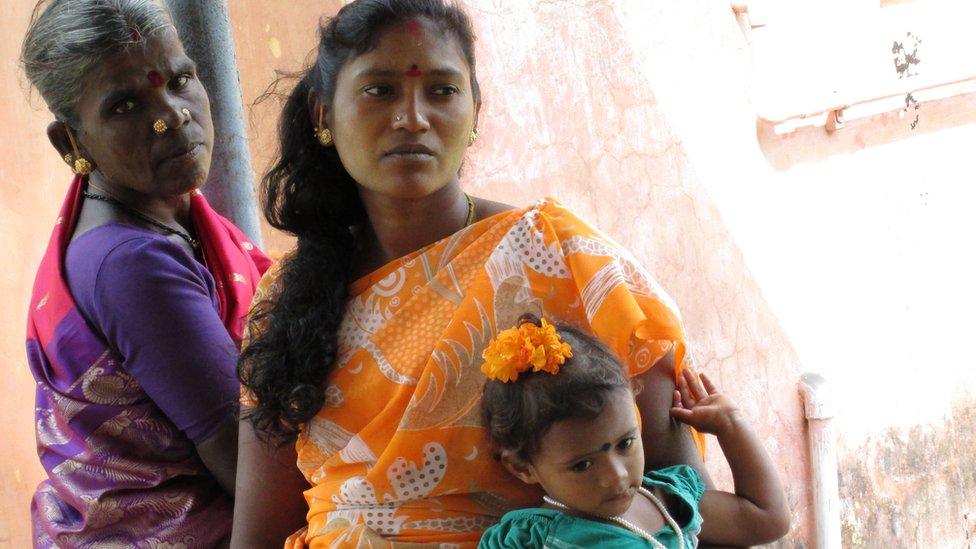Our tailor and the ‘ticking time bomb’
- Published
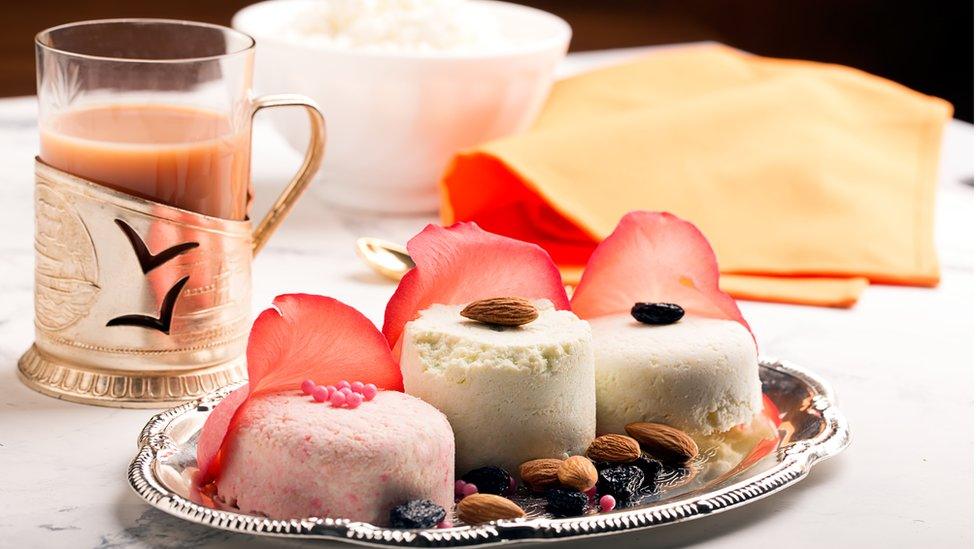
At December's Global Diabetes Summit in Berlin, doctors described Type 2 diabetes as "scarier than HIV and malaria," causing more deaths than either. But is society enabling the deadly killer?
It takes a seismic event to get a transglobal family together in one place. For mine, it was the death of my grandmother in Kerala.
She had been our collective anchor. My grandmother spoke five languages, so that she could communicate with all of her grandchildren, and knew exactly how everyone liked their tea. And everyone liked it differently, all with slightly different amounts of sugar.

The neighbourhood where I grew up in Calicut
Upon receiving the unexpected phone call, a sleepless night (pierced by even more phone calls) led to a hazy 40 hours which was broken up by a taxi, two planes, a few chocolate bars, a muted airport greeting and another car journey. By the time I arrived in Calicut, at the house where I had spent my childhood, there were only a few hours left until the funeral.
Someone made me a syrupy tea, which boosted my energy, and briefly, my mood. I made myself another two more.
Following the funeral, my aunt, who had travelled from America, asked me to take a walk with her. The oppression of the midday sun had subsided slightly, and if we stretched our legs, she said, we would feel better about the tea and sweets we could have when we got back home.
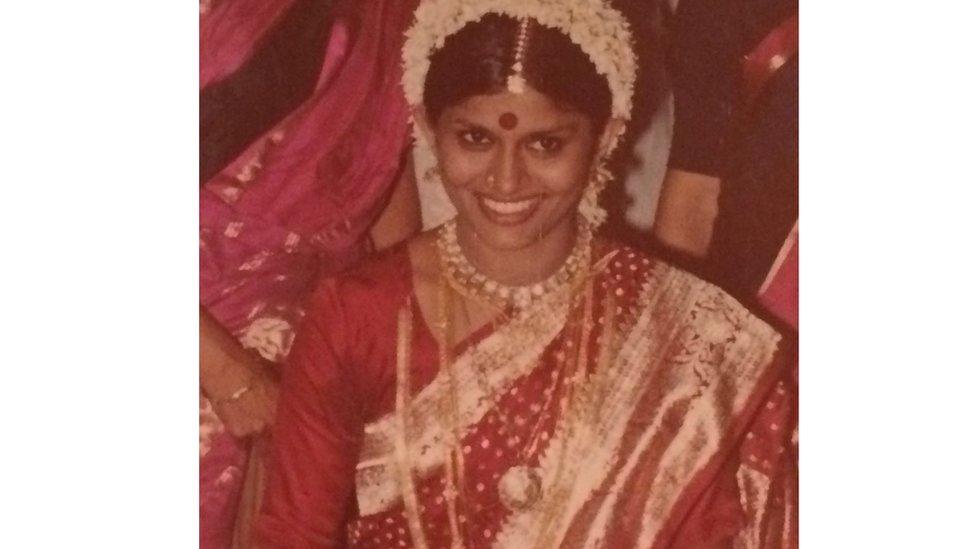
My aunt on her wedding day with the sari the family tailor sewed for her
Calicut, where I was born, is a city on India's south-west coast. I often thought, with no authority other than nostalgic affection, that it looked like someone had cut roads into the middle of a lush forest. There's significantly less traffic than in many other cities in India. Coconut trees line the streets, as the Arabian Sea sparkles to the west and the Wayanad hills rise in the east.
During the 13th Century, Calicut became a major port for the Indian Ocean trade route, external. Merchants were said to manipulate the monsoon winds to transport spices, cotton - and sugar - from there to the West.
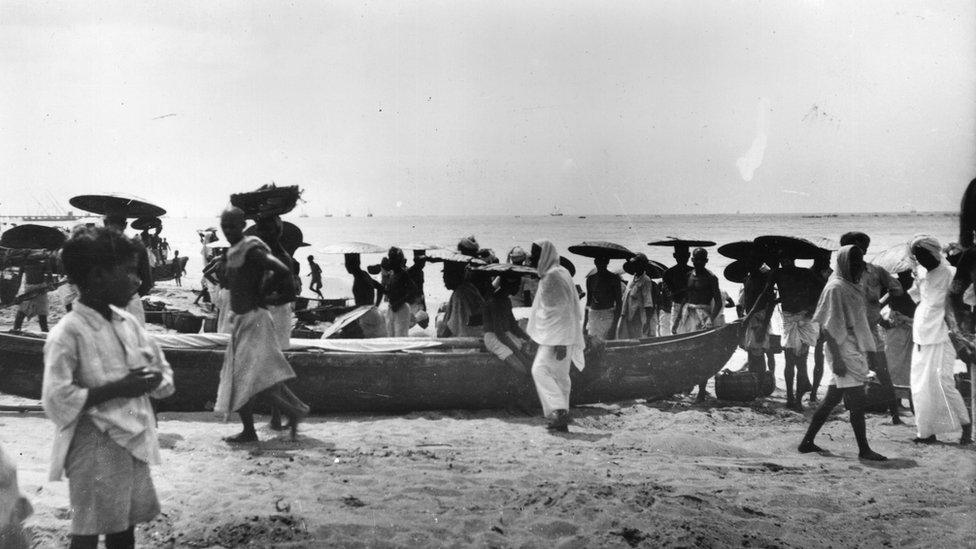
Calicut was a popular port integral to the Indian Ocean trade route
And as my aunt and I took our walk, we passed several street vendors. A man was pulping sugar canes into a drink.
Feeling slightly light-headed, I was tempted to buy one when something else caught my eye.
On the side of the road, under a papaya tree, a one-room shop, that I had been familiar with my whole life, was boarded up.
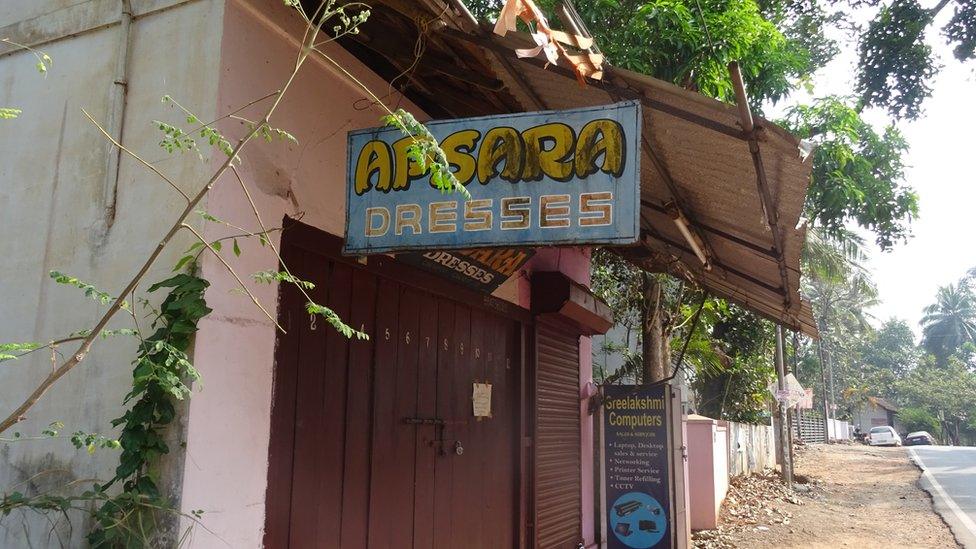
Our family tailor's boarded-up shop
It had belonged to a tailor named Padmanabhan. He had, with his sole sewing machine and thick robust fingers, been the architect of many of my family's fashion choices over the years.
He'd cut and shaped my aunt's wedding sari. And my cousin's. He'd made my school uniform. And my niece's and nephew's. He'd disapprovingly made me my first pair of skinny jeans, and pretended not to smile when I told him that people had asked if they were from Paris.
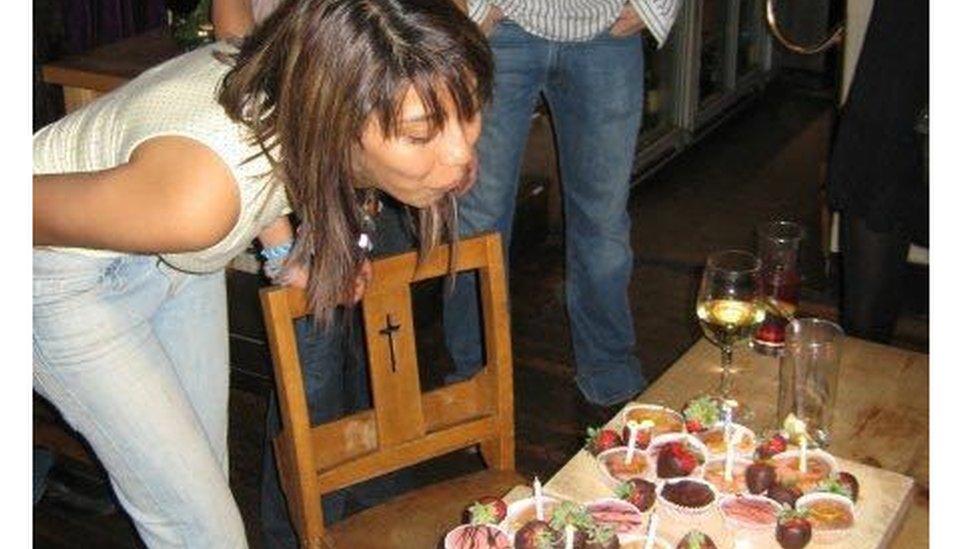
My first pair of skinny jeans had been made by Padmanabhan, our family tailor from Calicut
"He died," my aunt said, following my gaze.
"Of what, he was only in his 50s, wasn't he?" I asked, not particularly surprised that the news of our local tailor had reached her in Kansas.
"Type 2 diabetes. He had to have his leg amputated. So sad."
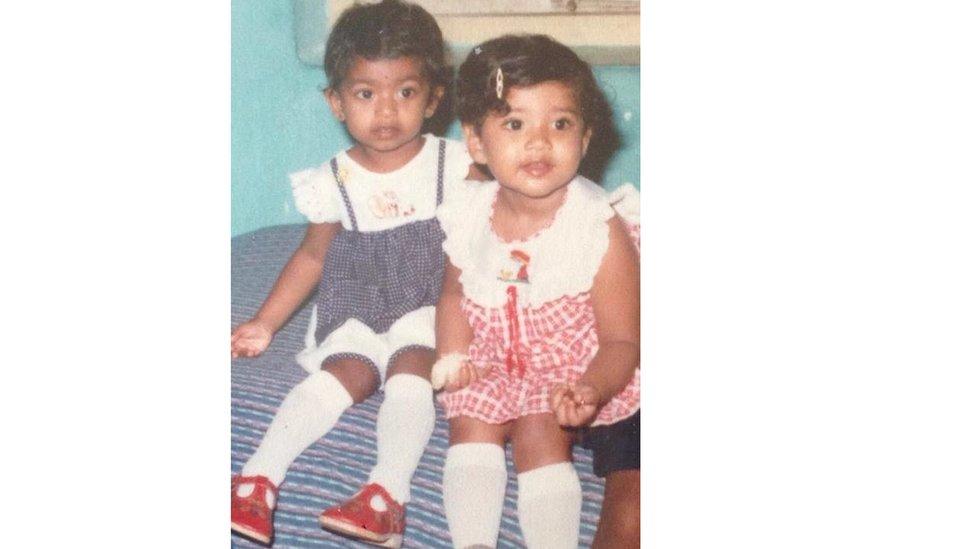
Myself (right) and my cousin had many of our childhood clothes made by the family tailor
The international burden of diabetes is a much-told news story. New data from the International Diabetes Federation, external estimates that 415 million people in the world have diabetes. By 2040, the figure is expected to grow to 642 million. That's an estimated one in 10 of the world population. Currently as much as 12% of total health expenditure goes on treating the disease.
India has, until it was surpassed by China, been called the diabetes capital of the world, with an estimated 50 million people, external having Type 2 diabetes. And worryingly, according to the World Health Organisation (WHO), that figure will only get worse - to an estimated 87 million, external people with the disease in the country by 2030.

Type 2 Diabetes
Diabetes is a condition that causes a person's blood sugar to become too high.
Type 1 diabetes can develop at any age, but often begins in childhood. It is not related to diet or lifestyle.
Type 2 diabetes is the most common type. According to the WHO, 90 to 95% of people with diabetes have Type 2 diabetes.
The UK's NHS says being overweight (with a BMI greater than 25) increases your risk of developing Type 2 diabetes.
According to Diabetes UK, men are at slightly higher risk of developing diabetes than women.
Age, excess weight (particularly around the waist), family history, physical inactivity, and poor diet are significant risk factors for the illness.

At December's Global Diabetes Summit, external in Berlin, Dr Sanjay Kalra and his colleague Dr Ashok K Das delivered a speech where they called Type 2 diabetes "a ticking time bomb for India".
'We need to understand and address the psychosocial domain of diabetes - not just the biomedical facts," Dr Kalra told me. "HIV is caused by relatively few high risk behaviours. For diabetes, high risk behaviours impact every sphere of life.
"Indian society frowns upon IV drug use and extramarital sex, but happily encourages unhealthy food and promotes inactivity (cars, escalators, remote control for TV)."
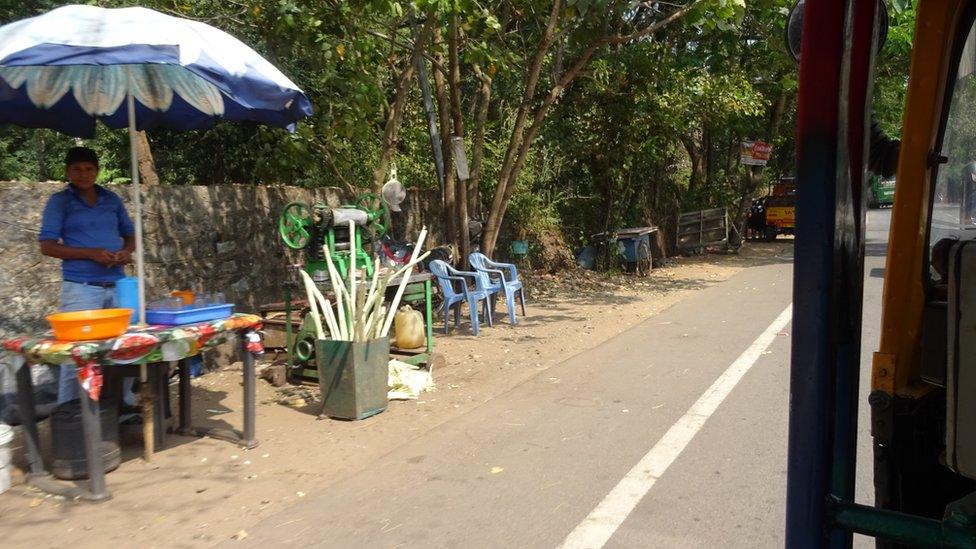
Sugar cane drinks being sold by the side of a Calicut street
Following our interview, Dr Kalra contacted me via Whatsapp to offer a few extra facts.
Did I know that 11 January 2017 marks 95 years since the first insulin injection was administered in Toronto? And urbanisation and stress leads to the disease, although it doesn't discriminate between classes or socioeconomic backgrounds.
And could I please remind our readers that reducing sugar and engaging in physical activity like yoga or something fun, like Punjabi folk dancing or bhangra, will go a long way towards reducing the condition.
Back on the side of the road in Calicut, I looked at Padmanabhan's boarded-up shop and back towards my aunt. She smiled, and took my hand, like she had when I was a child, to walk me back to the house.
We didn't have sugar in our tea that afternoon.
- Published24 October 2016
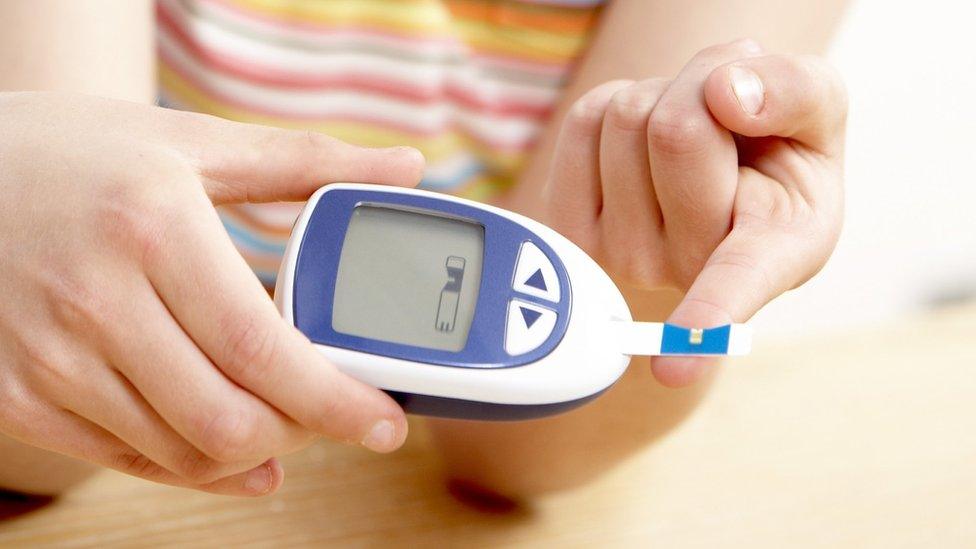
- Published12 January 2016
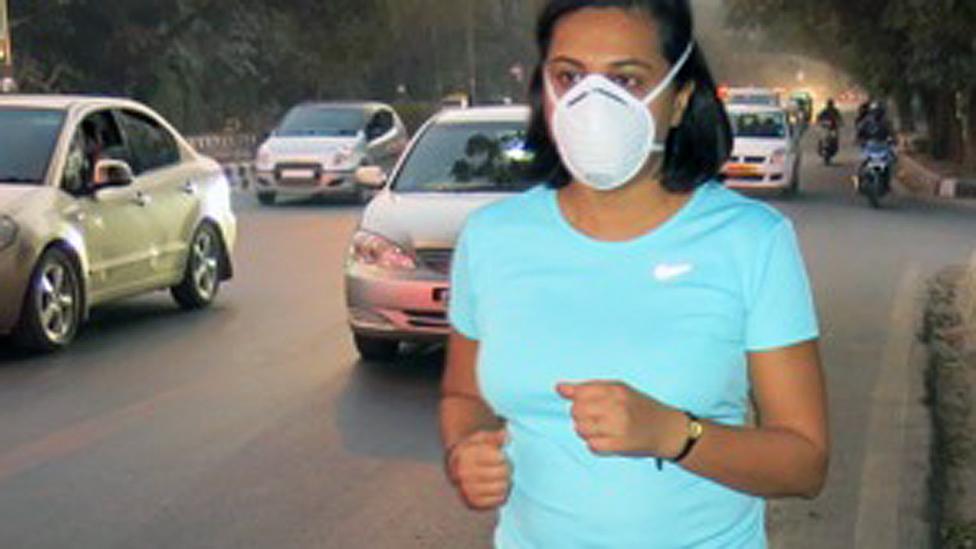
- Published14 November 2013
